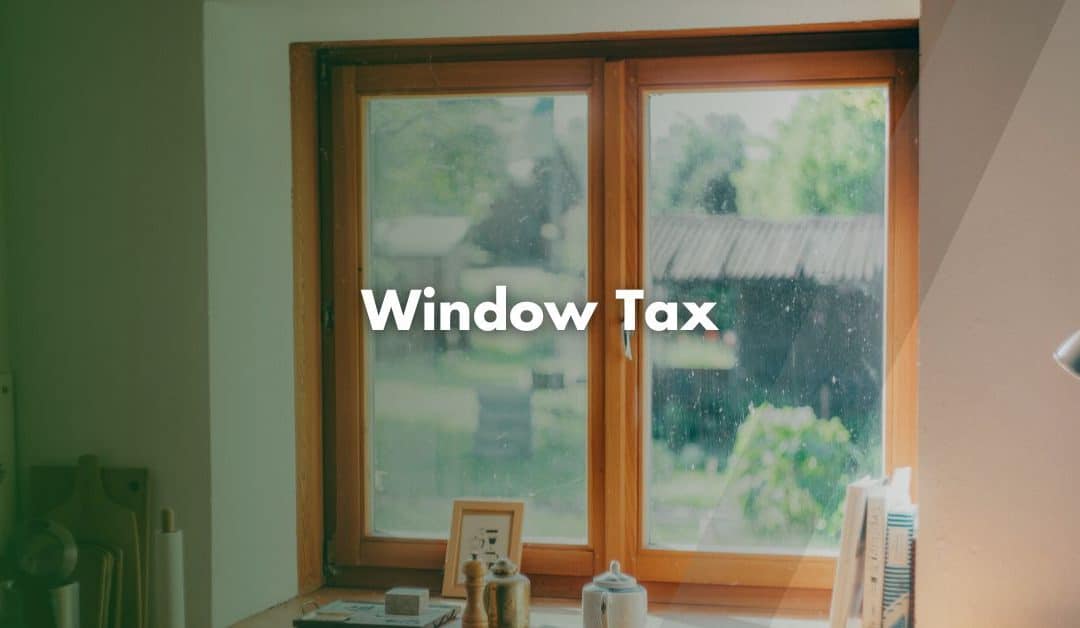Window Tax is a curious piece of history. It has shaped homes and sparked debate for more than 150 years. Its legacy reminds us that while governments design taxes to raise funds, people always adapt to lessen the burden. Sometimes, those adaptations go on to reshape society in lasting and unexpected ways.
What Actually Was Window Tax?
Window Tax was a property tax introduced in England and Wales in 1696 during the reign of King William III. It was an indirect way of taxing wealth without forcing people to disclose their income, which many considered intrusive. Instead of asking about earnings, the government assumed that more windows meant greater prosperity.
Scotland adopted the tax in 1748, Ireland in 1799 and France in 1798. England, Scotland and Ireland repealed the tax in 1851 but France continued with its version until 1926.
At its core, the tax aimed to balance fairness with practically. It was relatively easy to enforce, as tax collectors could count windows from the street without entering a property. In theory, larger homes with more windows contributed more to public funds, while small cottages contributed less or were exempt. However, what appeared straightforward in principle became controversial in practice.
How Did Window Tax Work?
At first, the Window Tax had two parts: a flat rate of two shillings per house and an extra charge for houses with more than ten windows. Homes with ten to twenty windows paid an additional four shillings, while those with over twenty windows paid eight shillings.
- In 1709, following the union of England and Scotland, new rates included a higher charge for houses with more than thirty windows.
- In 1747, the rules included a graduated system, where each additional window above the threshold attracted a fee.
- In 1766, houses with as few as seven windows become taxable.
By 1825, the threshold rose slightly to eight windows. The flat-rate charge also changed, and it 1778, it became dependant on property value. Certain buildings, such as dairies, were exempt if they displayed signs to identify their function. Poorer households that did not pay church or poor rates were also exempt, but families living in shared urban housing often suffered under the tax regardless.
The Social and Health Impact
Although the government presented the Window Tax as fair and efficient, its impact on ordinary people was severe. To avoid higher bills, landlords bricked up windows in their properties. Tenants then lost access to natural light and fresh air, which harmed health and reduced quality of life.
Diseases such as typhus and gangrene spread more easily in dark, poorly ventilated homes. In 1781, a typhus outbreak linked to poor air circulation in a multi-family house killed 52 people.
As living standards declined, the tax gained the nickname “tax on light and air”. Wealthier households might sacrifice architectural elegance, but the poorest tenants endured the worst consequences. The policy widened social divides by punishing those with the least control over their living conditions.
Changes in Architecture
The Window Tax influenced the appearance of buildings across Britain and Europe. To minimise liability, builders designed homes with fewer windows, producing darker interiors.
In Scotland, some householders painted false windows with black paint and white frames, nicknamed “Pitt’s Pictures”. In England and Wales, entire rows of terraced houses display bricked-up sections where windows once existed. Today, these visible reminders attract the attention of historians and visitors alike.
Not every blocked window resulted from taxation, as some resulted from symmetry or design purposes. Even so, the widespread practice of bricking windows to avoid tax payments left a lasting impact on both architecture and public health. The unintended result was entire communities growing up in homes deliberately deprived of light and ventilation.
The End of Window Tax
By the early 19th century, the Window Tax had become one of Britain’s most disliked levies. Public agitation grew during the winter of 1850/51, when campaigners pressed for its abolition. Critics argued that the tax discouraged healthy living and unfairly targeted the poor.
After decades of resistance, Parliament repealed the Window Tax in 1851 and replaced it with a tax on inhabited houses. Ireland and Scotland repealed their versions at the same time, while France retained its system until 1926. The repeal marked a relief for many communities and represented an important step in the development of modern taxation.
Lessons from Window Tax
The story of Window Tax highlights how people adapt to taxation. Instead of delivering the revenue expected, it encouraged property owners to reduce the number of windows or seek loopholes. The outcome included health problems and public unrest, with architectural changes lawmakers had never intended.
These lessons remain relevant today. Taxes on alcohol, tobacco, property or house purchases influence behaviour in unexpected ways. Higher cigarette duties can lead to smuggling, while steep property transaction taxes discourage people from moving, limiting homes available to younger families. The Window Tax stands as a striking historical example of unintended consequences.
Contact Us
We are not just accountants; we are Chartered Accountants with one of the most reputable and premium accounting bodies. We are registered and regulated by ACCA; so you can rest assured that you are in good hands. Knowing this, don’t hesitate to get in touch with us if you require assistance: Pi Accountancy | Contact Us
This article is for general informational purposes only and does not constitute legal or financial advice. While we aim to keep our content up to date and accurate, UK tax laws and regulations are subject to change. Please speak to an accountant or tax professional for advice tailored to your individual circumstances. Pi Accountancy accepts no responsibility for any issues arising from reliance on the information provided.

